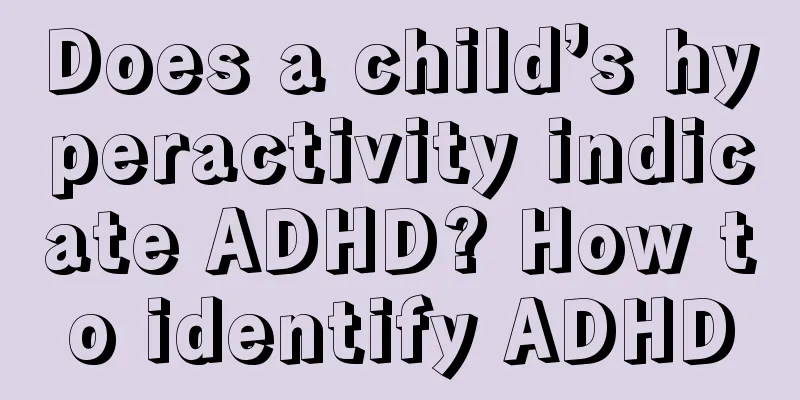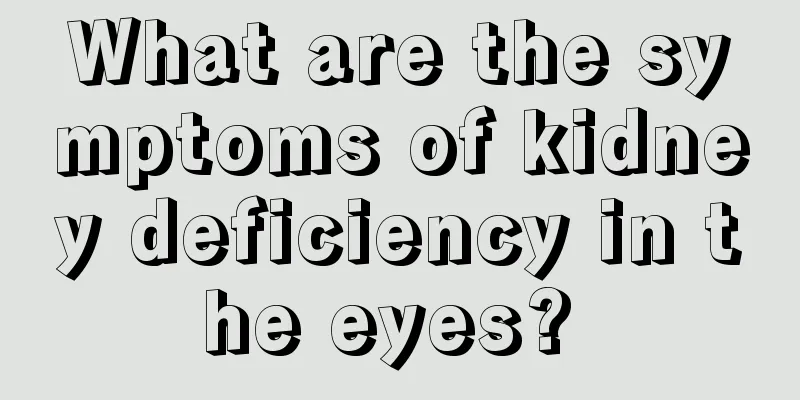Does a child’s hyperactivity indicate ADHD? How to identify ADHD

|
Many parents are often confused about whether their children's hyperactivity indicates ADHD, because there is a difference between children's hyperactivity and ADHD. Being naughty does not necessarily mean they have ADHD. The main manifestations are excessive activity, inability to calm down, frequent jumping around or disobedience to discipline, severe inattention, great difficulty in learning, and symptoms of decreased intelligence. In this case, it should be considered a manifestation of ADHD, and the child needs to be taken to the hospital for timely examination. To identify whether a child has ADHD, you should look at the following aspects: (1) Overactivity: The child is restless, hyperactive, and prone to crying and difficulty meeting demands. As they grow older, their activity level increases. They make more small movements in class, run around, jump around, talk a lot, fail to observe discipline, and ignore danger. (2) Inattention: This is manifested as not paying attention in class, the mind wandering, being easily attracted by things around, and being easily distracted by external interference. The handwriting is sloppy, the students procrastinate when doing homework, make frequent mistakes, and never finish what they start. (3) Impulsiveness and willfulness: Children with ADHD have volatile emotions and are easily agitated, angry, quarrelsome, and lack self-control. They behave childishly, love to play, skip school, fight, and even lie and steal, embarking on the road of crime. A few have personality and behavioral defects as adults. (4) Learning difficulties: Although most of them have normal intelligence, their academic performance is poor and fluctuates. It is sometimes good and sometimes bad. If they make progress, their performance will improve, but if they don’t make progress, their performance will decline. As they move into higher grades, their performance gradually declines, and some may even fail or repeat a grade. (5) Poor self-control: Children with this disorder are extremely emotionally unstable. When they are happy, they laugh, sing, and dance. When they are unhappy, they lose their temper and are prone to hurting others or themselves. They also refuse to obey the discipline of teachers and parents. (6) Abnormal behavior: Children with this disease often show clumsy movements, such as having difficulty buttoning, tying shoelaces, using scissors, etc., and they do not walk in a straight line. Some children cannot distinguish left from right, up from down, have spatial position disorders, and are prone to misreading or writing similar words. |
<<: How should asthma be treated? Combining Chinese and Western medicine has good effect
>>: How to solve the problem of low high-sensitivity thyroid-stimulating hormone?
Recommend
Why are both arms sore?
I wonder if you have ever encountered this situat...
The difference between color Doppler ultrasound and four-dimensional color Doppler ultrasound
When you go to the hospital for a physical examin...
Analysis of several common symptoms of esophageal cancer
There are many diseases that may occur in the eso...
Which two places will show abnormalities in the early stage of gastric cancer
In the early stages of gastric cancer, two common...
There is a lump on my neck that hurts when I press it. So this is what's going on
The appearance of a lump on the neck itself will ...
Should you spit out the seeds when eating pomegranate
Many people don't like to eat pomegranates. A...
How long can you live with low-grade bladder cancer
Bladder cancer is a common malignant tumor of the...
What shampoo can remove dandruff and relieve itching
There are many kinds of shampoos on the market, m...
What is the best way to diagnose small liver cancer? There are three methods
Early detection of small liver cancer is very imp...
About postoperative care for patients with endometrial cancer
We all know that endometrial cancer is a serious ...
How much does mid-term chemotherapy for endometrial cancer cost?
Endometrial cancer is one of the most common gyne...
What are the causes of small intestine cancer? Five food elements are closely related to small intestine cancer
1. Animal foods, meat, protein and fat are positi...
How to process and preserve fresh peach gum?
Many friends think that freshly collected peach g...
Can melanoma be cured?
Can melanoma be cured? Melanoma is a common skin ...
How to clean a yellowed sink?
With the development of the economy, the living s...









